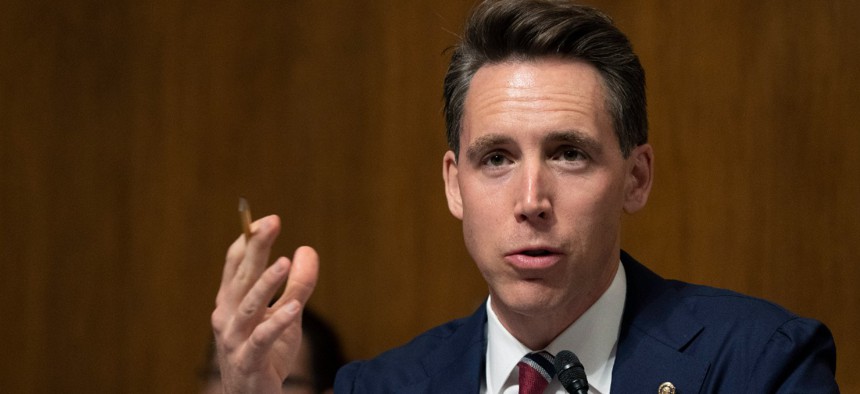
Sen. Josh Hawley, R--Mo., is one of the sponsors of the bill. Ken Cedeno/Pool Photo via AP
Bipartisan Group of Senators Pushes Agencies to Lease Excess Space to Universities, Solar Companies
Revenue generated would go to capital investments and facility maintenance.
A bipartisan group of senators is looking to allow agencies to make better use of their excess property, introducing a bill to enable them to lease their underutilized buildings.
Federal agencies regularly own property that they do not use but also cannot sell, as a part of their campus or in a facility that they only use part of the year, the lawmakers said. The Saving Money and Accelerating Repairs Through (SMART) Leasing Act, introduced by Sens. Gary Peters, D-Mich., James Lankford, R-Okla., Kyrsten Sinema, D-Ariz., and Josh Hawley, R-Mo., would allow agencies to rent those spaces after receiving approval from the General Services Administration. The revenue generated from the rentals would go to capital projects and maintenance of existing facilities.
“Properties that federal agencies need, but are underused, present an opportunity for our government to generate revenue that can fund important projects, save taxpayer dollars and root out waste,” Peters said. “This commonsense, bipartisan bill will help other public and private organizations make productive use of underutilized government property, and at the same time help federal agencies improve their facilities and reduce costs.”
The lawmakers said space could be rented for solar fields, for example, or to universities. GSA would have to sign off that any leased property would not be detrimental to the agency’s mission and would have to be rented out at the market rate. The program would begin as a pilot, with only six leases per year through 2024. GSA would then advise Congress on whether to extend or expand the program. The lawmakers noted that NASA has already launched and found success with a similar program.
“Taxpayers deserve to know that government resources are being used as efficiently and effectively as possible,” Hawley said. “This legislation takes an important step toward generating new revenue from underutilized federal property to ensure our federal agencies are responsible stewards of taxpayer dollars.”
Federal agencies have for years contemplated what to do with excess properties. The Obama administration identified 14,000 excess federal buildings and an additional 55,000 that were under- or unutilized. Obama in 2016 signed into law a measure to require GSA and the Office of Management and Budget to better track unneeded federal buildings and streamline the process for disposing of them. It also created the Public Buildings Reform Board as an independent agency with the sole purpose of reducing the federal government's property inventory.







